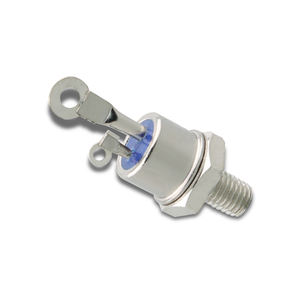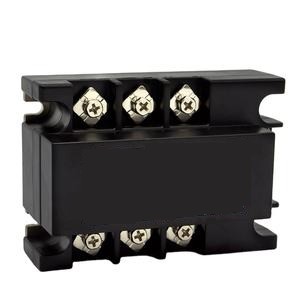Thyristors Online | High-Quality Power Semiconductors
PRODUCT PARAMETERS
Description
Overview of Heatlinks
Heatlinks function by providing a path of low thermal resistance between a heat source (such as an electronic component) and a heat sink or cooling system. They can be particularly useful in environments where space constraints limit the use of traditional cooling methods, or when a passive thermal management solution is preferred.
Heatlinks can operate based on different principles, including phase change materials, solid-state conduction, or even fluid-based systems. The choice of technology depends on the application’s specific requirements, such as operating temperature range, power dissipation levels, and spatial limitations.
Features of Heatlinks
High Thermal Conductivity: Designed to offer high thermal conductivity, ensuring efficient heat transfer from the source to the sink.
Compact Design: Often compact, allowing them to fit into tight spaces within electronic assemblies or other equipment.
Passive Operation: Typically do not require external power to function, relying instead on the natural flow of heat from hot to cold areas.
Durability and Reliability: Manufactured to withstand repeated thermal cycles and harsh environmental conditions without degradation of performance.
Low Profile: Thin profiles help minimize the impact on the overall design of products.
Versatility: Can be tailored to fit various applications, from consumer electronics to industrial machinery and aerospace components.
Customizable: Available in different shapes, sizes, and configurations to meet specific design needs.
Cost-Effective: Provide an economical solution for thermal management compared to more complex cooling systems.
Minimal Maintenance: Generally require little to no maintenance once installed.
Environmental Compatibility: Designed to be compatible with a wide range of environments, including those that may contain corrosive elements or experience significant temperature fluctuations.
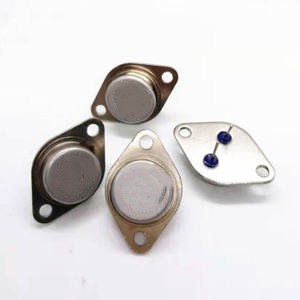
(Custom Anodized Aluminum Heatsink Extrusion Aluminum Extruded Profile Power Supply Inverter Aluminum Heat Sink)
Specifications of Custom Anodized Aluminum Heatsink Extrusion Aluminum Extruded Profile Power Supply Inverter Aluminum Heat Sink
This custom anodized aluminum heatsink extrusion is designed for efficient thermal management in power supply systems, inverters, and electronic devices. The extruded aluminum profile ensures high heat dissipation performance. The material is 6063 or 6061 aluminum alloy, known for good strength and thermal conductivity. Standard lengths range from 100mm to 3000mm. Custom lengths are available. Cross-sectional dimensions vary based on design requirements. Common thicknesses are 1.5mm to 5mm. Surface treatment includes anodizing. Anodizing improves corrosion resistance. It also enhances surface hardness. Color options include black, silver, and custom finishes. The process creates a uniform oxide layer. This layer protects against wear and environmental factors. The heatsink’s structure features fins or ridges. These increase surface area. Heat transfers faster from components to the surrounding air. The extrusion process allows complex shapes. Tight tolerances are maintained. Precision tooling ensures consistency. Mounting options include pre-drilled holes or threaded inserts. Installation is straightforward. Compatibility with different hardware types is guaranteed. Applications include industrial power inverters, LED lighting systems, motor drives, and telecom equipment. The heatsink works in high-temperature environments. It prevents overheating in compact spaces. Custom designs accommodate specific component layouts. Modifications to fin density or base thickness are possible. Thermal simulation services optimize performance. Prototyping is available for testing. Production lead times depend on order volume. Bulk orders receive discounted pricing. Packaging uses protective materials. Damage during shipping is minimized. Technical support assists with design integration. Performance data includes thermal resistance values. Testing follows industry standards. Compliance with RoHS and REACH regulations is confirmed. The product reduces energy waste. It extends the lifespan of electronic devices. Maintenance requirements are low. Cleaning involves simple wiping. No special treatments are needed. Compatibility with thermal interface materials like grease or pads is verified. The heatsink meets demands for reliability in demanding applications. Custom branding or logos can be added. Samples are provided for evaluation.
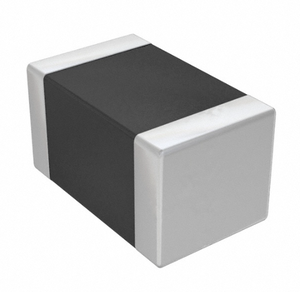
(Custom Anodized Aluminum Heatsink Extrusion Aluminum Extruded Profile Power Supply Inverter Aluminum Heat Sink)
Applications of Custom Anodized Aluminum Heatsink Extrusion Aluminum Extruded Profile Power Supply Inverter Aluminum Heat Sink
Custom anodized aluminum heatsink extrusion aluminum extruded profiles are essential for managing heat in electronic and industrial systems. These components efficiently transfer heat away from sensitive parts. They prevent overheating. They ensure devices operate reliably. They are widely used in power supplies. Power supplies generate significant heat during operation. Custom heatsinks maintain safe temperatures. This extends the lifespan of the equipment. They are also critical in inverters. Inverters convert DC power to AC power. This process produces heat. Aluminum heatsinks absorb and disperse this heat. They keep the system stable.
The anodized coating on these aluminum profiles adds value. It improves corrosion resistance. It enhances durability. It allows for better heat dissipation. The coating can be customized in color. This supports branding or aesthetic needs. The extruded design offers flexibility. Complex shapes can be created to fit specific spaces. This ensures optimal contact with heat sources.
These heatsinks are common in LED lighting systems. High-power LEDs generate heat. Effective cooling maintains brightness and longevity. They are used in automotive electronics. Electric vehicles rely on thermal management for batteries and control units. Industrial machinery also benefits. Heavy-duty equipment requires robust cooling solutions.
Customization is a key advantage. Manufacturers adjust dimensions, fin density, and base thickness. This meets unique project requirements. The lightweight nature of aluminum reduces overall system weight. It does not compromise strength.
Anodized aluminum heatsinks work in renewable energy systems. Solar inverters and wind power converters need efficient cooling. Telecommunications equipment uses them to protect sensitive circuits. The non-conductive anodized layer adds safety. It prevents electrical shorts.
These products are cost-effective. Aluminum is abundant and recyclable. The extrusion process minimizes material waste. Anodizing extends product life. This reduces replacement costs. They suit high-volume production. They also accommodate small batches for specialized applications.
Performance remains consistent under extreme conditions. They handle high temperatures. They resist environmental damage. This makes them ideal for outdoor or harsh industrial settings. The combination of functionality and adaptability makes custom anodized aluminum heatsinks a practical choice across industries.
Company Profile
PDDN Photoelectron Technology Co., Ltd.(sales@pddn.com) is one of the leading enterprises in power electronics technology and power products, which is fully involved in developing solar inverters, transformers, voltage regulators, distribution cabinets, thyristors, modules, diodes, heaters, and other electronic devices or semiconductors. We will be committed to providing users with high-quality, efficient products and considerate service.
It accepts payment via Credit Card, T/T, West Union, and Paypal. PDDN will ship the goods to customers overseas through FedEx, DHL, by sea, or by air. If you want high-quality Custom Anodized Aluminum Heatsink Extrusion Aluminum Extruded Profile Power Supply Inverter Aluminum Heat Sink, please send us inquiries; we will be here to help you.
Payment Methods
L/C, T/T, Western Union, Paypal, Credit Card etc.
Shipment
By sea, by air, by express, as customers request.
Storage Conditions
1) Store in a dry environment at room temperature.
2) Avoid damp and high temperature.
3) Use immediately after opening the inner packing bag.
5 FAQs of Custom Anodized Aluminum Heatsink Extrusion Aluminum Extruded Profile Power Supply Inverter Aluminum Heat Sink
Custom anodized aluminum heatsink extrusions manage heat in power supply inverters. Here are answers to common questions. What makes anodized aluminum suitable for heatsinks? Anodizing creates a protective oxide layer on aluminum. This layer resists corrosion. It improves durability. The process also enhances heat dissipation. Aluminum’s natural conductivity works with the anodized surface to transfer heat efficiently. This combination prevents overheating in devices like power inverters.
Why choose custom extruded profiles over standard designs? Custom profiles fit specific device requirements. Power supply inverters vary in size and heat output. Off-the-shelf heatsinks might not match unique shapes or thermal needs. Extrusion allows precise shaping. It ensures optimal contact between the heatsink and heat source. This customization boosts performance.
How does anodizing affect the heatsink’s performance? Anodizing does not block thermal conductivity. The oxide layer is thin. Heat still moves through the aluminum quickly. The layer prevents oxidation. Oxidation can reduce efficiency over time. Anodized surfaces also allow for color finishes. This aids in branding without harming function.
Can these heatsinks handle high-power applications? Yes. Anodized aluminum extrusions work in high-power settings. They manage heat in inverters running heavy loads. The material’s lightweight nature avoids adding bulk. Design flexibility lets engineers increase surface area for better cooling. This is critical for preventing component failure in demanding environments.
What maintenance do anodized aluminum heatsinks require? They need minimal upkeep. The anodized layer resists dirt and corrosion. Occasional cleaning with a dry cloth removes dust. Avoid abrasive materials. They might scratch the surface. Scratches do not affect thermal performance much. They can impact appearance. Regular inspections ensure no physical damage blocks heat transfer.

(Custom Anodized Aluminum Heatsink Extrusion Aluminum Extruded Profile Power Supply Inverter Aluminum Heat Sink)
REQUEST A QUOTE
RELATED PRODUCTS

High Performance Custom Aluminum Extrusion Profile Heat Sink Extruded Semiconductor Industry Cooler HeatSink
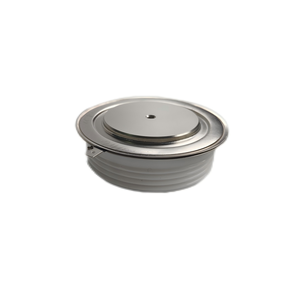
CNC machining Aluminum 3D Printer Heatsink Compatible with V6 J-Head Extruder Hotend Bowden – Short Heat Sink M6

High Power Inverter Power Supply Heat Sink Custom Aluminum Skiving Dense Thin Fins heatsink

black anodized small size standard extruded heatsink profile electronic extrusion to-126 to-220 aluminum heat sink

Customized Terminal heatsink Rectangle Die Cast Anodized Black Custom Led Aluminum Pin Fin Heat Sink
